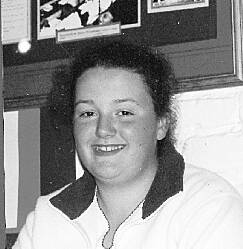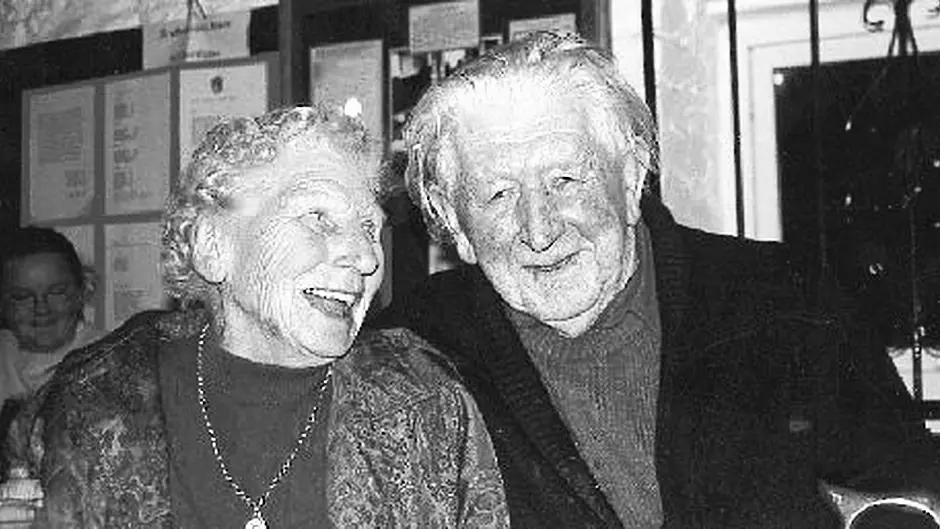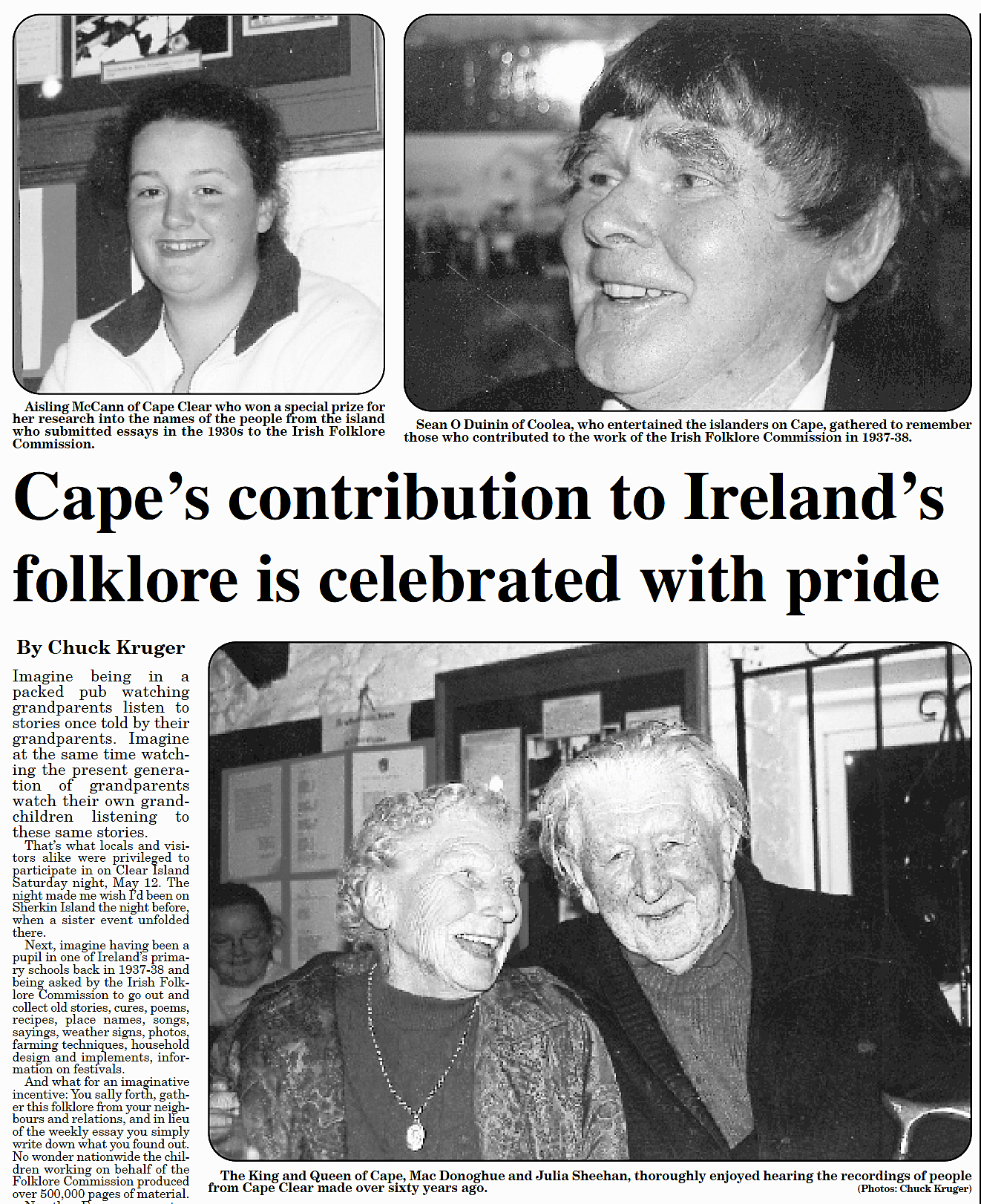This article appeared in The Southern Star in May 2001 and is about Cape Clear's contribution to Ireland's folklore being celebrated with pride.
Imagine being in a packed pub watching grandparents listen to stories once told by their grandparents.
BY CHUCK KRUGER
Imagine at the same time watching the present generation of grandparents watch their own grandchildren listening to these same stories.
That’s what locals and visitors alike were privileged to participate in on Clear Island Saturday night, May 12.
The night made me wish I’d been on Sherkin Island the night before, when a sister event unfolded there.
Next, imagine having been a pupil in one of Ireland’s primary schools back in 1937-38 and being asked by the Irish Folklore Commission to go out and collect old stories, cures, poems, recipes, place names, songs, sayings, weather signs, photos, farming techniques, household design and implements, information on festivals.
And what for an imaginative incentive: You sally forth, gather this folklore from your neighbours and relations, and in lieu of the weekly essay you simply write down what you found out.
 Aisling McCann of Cape Clear who won a special prize for her research into the names of the people from the island
Aisling McCann of Cape Clear who won a special prize for her research into the names of the people from the islandwho submitted essays in the 1930s to the Irish Folklore Commission.
No wonder nationwide the children working on behalf of the Folklore Commission produced over 500,000 pages of material.
No other European country, says Dr. Ríonach Uí hÓgain, Professor of Folklore at UCD and the expert who selected the relevant material from the archives and adroitly and bilingually presented it on both islands, has undertaken such a project.
From Cape alone 28 copybooks, filled out in 1937-38 and skillfully organised by the then island schoolmaster, Donncha de Burka, are part of the national collection.
On the overhead projector Ríonach displays page after fascinating transparency page of the collection.
There are the full names of all Cape’s students in 1937-38.
There, in their usually careful, meticulous handwriting, the names of all of Cape’s 19 wells, the names of all the fields.
And such stories. In one, a red-hot poker finally chases the changeling back to the fairies.
In another a souper quenches the light and goes to work for the devil forever.
BLESSINGS
And such blessings: May you live forever until you are older.
And such curses: May you be seven times worse by this time next Christmas.
Beware not giving money to the wren boys.
Mairead Foley, with her three children beside her, spots the inimitable handwriting of her grandparents; Diarmuid O’Driscoll gazes at that of his father and aunts.
 Sean O Duinin of Coolea, who entertained the islanders on Cape, gathered to remember those who contributed to the work of the Irish Folklore Commission in 1937-38.
Sean O Duinin of Coolea, who entertained the islanders on Cape, gathered to remember those who contributed to the work of the Irish Folklore Commission in 1937-38.
And when Ríonach explains what lies behind what we’re seeing and hearing, she speaks not in her native Connemara Irish but in the Munster dialect.
We learn about ‘Kerry Jerry,’ another folklorist, who alone collected 1500 pages of material.
We see a drawing of a ‘nobley’ (a type of boat) with the local names for all its parts.
We hear Cape Clear Islanders singing on tape, voices from the thirties through the seventies alive once more.
I’m suddenly listening to the mother of one of my neighbours – who, like me, was born in 1938 – sing “Believe me, if all those endearing young charms.”
Such a young and enduring voice.
 Storyteller Pat ‘The Hat’ Speight, right, from Cork City, who worked with today’s pupils of Scoil Naisiunta Oilean Chleire on collecting futher local folklore, in conjunction with
Storyteller Pat ‘The Hat’ Speight, right, from Cork City, who worked with today’s pupils of Scoil Naisiunta Oilean Chleire on collecting futher local folklore, in conjunction withrecalling that collected by their counterparts back in 1937-38. Included, from left, are Aoife McCann, Roisin Leonard, Brian O’Driscoll, Ruairi McCann and Fintan O’Driscoll.
With Anna Legge of the Cork County Council’s Art Office energetically organising these evenings from the mainland, and Síle Cadogan, Cape’s devoted librarian, seeing to all the myriad island details, we have more than some night of it.
Anna and Síle also arranged special events for the island children to help celebrate this ‘Schools Collection 1937 and 1938’.
None other than Pat Speight, aka Pat-the-hat, Cork city Seanchai, Scealai, and featured teller at storytelling festivals all over Ireland, England, and North America, taught several day-long storytelling workshops for the islands’ children, helping them to explore the original collection and then to go out and collect material just as the first pupils did back in the ’30s.
LOOK FOR
Pat had a ball, he told me, helping the children learn what to look for – and how to look for it.
He believes the children now realize that the old folks have knowledge and that the kids can become the keepers of that knowledge – and that they’ve now experienced how stories are passed on.
Pat adds, “the bag of stories has bitten them. And now they know how to draw stories out of the spirit bag – and how to pass them on themselves.”
Then, alternating with Pat, that veritable well-spring of stories, Sean O Duinín of Coolea, an old favourite to the people of Cape, tells tales in Irish and English, sings, plays the squeeze box, acts as MC.
His roguish sense of humour, his twinkling eyes, his mercurial shifts in plot and rhythm, his trickster’s ability to improvise (seemingly) while proceeding apace, make his style distinctive yet give one the feeling that all he says and does is dramatically shaped out of an ancient Irish mould.
I watch as people of all ages literally convulse with laughter.
Across the room a ship captain doubles over in gales a bit different from those he deals with so calmly on Roaring Water Bay.
Islandman Michael C. O’Driscoll, retired mariner, now farmer, comes to the front, gives us a personal glimpse of the late thirties.
He was in the junior class, while both his sisters were in the senior class collecting the original tales, several told by his parents donated to “The Big Book”. Storytelling, he recalls, provided the major part of evening entertainment.
He reminds me of what Paddy Burke, a sadlymissed Cape publican, once told me: “When the fella with one eye sat down in the corner, storytelling on Cape ceased. And, Chuck, I’m not talking about any of our neighbours.”
Aisling McCann, a pupil at Cape’s Scoil Náisiúnta, shares a story, in Irish, that she collected for her part of the new project.
 Olivia Hegarty, Skibbereen, stepping it out on the dancefloor with her grandfather, Bernie Lynch of Cape Clear, at the folklore collection celebration.
Olivia Hegarty, Skibbereen, stepping it out on the dancefloor with her grandfather, Bernie Lynch of Cape Clear, at the folklore collection celebration.
A little later she is awarded a special prize for her research into the names of the people who submitted essays for the 1930s collection and for her leadership of the school group.
The island ‘king’, its most senior male citizen and grandfather to five Cape children, Mac Donoghue, recites from his rich storehouse a maritime poem by ‘Pat the Poet’ Mac Cotter, a Cape seaman from the middle of the last century.
Later he takes his cane to the front of the room and, as if occasionally reading off the walking stick itself, delivers two more Cape poems.
Around us, conjured up by his voice, romantically flicker the Fastnet Lighthouse and Dunanore, the island’s Castle of Gold.
Two young sisters from Skibbereen, Cara and Olivia Hegarty, children of John and Bernadette, and grandchildren of island woman Kathleen Lynch and her Castletownbere husband and island farmer, Bernie, take turns step dancing half the length of the room, their long wavy hair billowing, their striking dresses catching light, their legs as nimble and well-trained as if they were protégés of some cross between the Riverdance School and the Bolshoi Ballet.
Eight people face off, laugh and swirl their way through a traditional Irish set dance played by Sean.
All ages head for the floor and waltz, man and wife, grandfather and granddaughter, mainlander and islander, blow-in and local.
Cape farmer and mainland teacher Maurice Foley sings, teacher and publisher and now permanent inhabitant of the island Niall Cosgrove follows suit, so too do ex-teacher and Holiday Homes proprietress Mary Molloy-O’Driscoll and, perhaps, Cape’s favourite mainland electrician, John Hegarty of Skibbereen, father of the dancers.
PRESERVE
Looking back over the vast array of events and moments during this celebration of folklore, I suddenly hear Sean O Duinín comment that learning a story by heart, why, “that’s cultivating the mind.”
He adds that stories have the power – when properly put together – to “preserve a language. Preservation, that’s beautiful.”
And then I give ear as Éamon Lankford, curator of Cape’s Heritage Centre and contributor of the beckoning historical photos that more than decorate the walls of An Club, is called upon to say a few words.
He helps me gain perspective on what’s been going on, not just this brimful night, not just on Oileán Chléire: “The storytelling tradition,” he succinctly clarifies, “puts us in touch with the soul of the island.”
Imagine that.
• Chuck Kruger’s collection of prize-winning short stories, “‘Flotsam & Jetsam”, was launched at the WestCork Arts Centre on June 1st 2001.
Did you know it's possible to read past editions of the Southern Star dating all the way back to 1882? Enjoy 135 years of local and national history at your fingertips with a subscription to the Irish News Archives.












